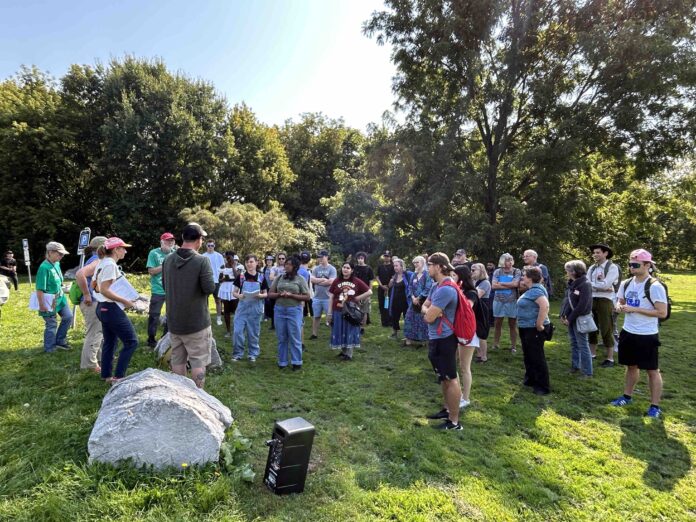
Carleton students are working alongside Ottawa community organizations to increase awareness and accessibility of pollinator gardens as a tool for environmental sustainability.
Now in its fourth consecutive year, the semester-long project is a collaboration between Carleton’s sociology and anthropology department and Community Associations for Environmental Sustainability (CAFES) Ottawa.
Through this partnership, 59 Carleton students in a second-year community engagement course are paired with community representatives from Bel Air, Centretown, the Glebe, Hintonburg, Overbrook and Westboro.
Erica Shardlow, the trees and greenspace co-ordinator at CAFES, said pollinator gardening — which involves planting native species rather than non-native species — plays an important in local sustainability efforts.
“Pollinator gardening is such a powerful way of promoting biodiversity in our neighbourhoods and helping to reverse the decline of our pollinators like bees, butterflies, other insects as well as birds,” she said.
Shardlow added that few people know about the benefits of pollinator gardens. As part of the course, students are now taking what they’ve learned to spread awareness through educational outreach projects, she said.
Some of these projects include high school presentations, informational signage and pamphlets, and interactive garden maps. Other projects take existing literature or signage on pollinator gardens and include additional languages to increase accessibility.
Nishtha Hurrydass, a second-year sociology student in the course, led a planting event in front of Westboro’s MEC outdoors store on Nov. 2 as part of her project. More than 30 attendees were provided with pollinator-friendly plants and were invited to plant and drink hot chocolate. They also had the chance to ask questions to community speakers, including city councillor Jeff Leiper.
“My goal for the planting event is to show people that it’s not difficult to grow their own pollinator garden in their own backyard or front yard, in any space they have,” Hurrydass said.
Hurrydass added that the “community communication” in reaching out to potential event speakers and community representatives was a rewarding part of her project.
Gabriel Jamieson, the course’s teaching assistant, said that while final products and community impacts are important, they’re not the only measure of success in a community engagement course.
The teaching team also evaluates the process and long-term impact of how the course has “affected [students] in terms of their knowledge and ability to engage in the community,” Jamieson said.
Phillip Primeau, the course instructor, said a lot of their students’ learning happened during a visit to Fletcher Wildlife Garden in the second week of the course. Over the last 30 years, they said the garden went from an unusable space to now being “full of ecological diversity.”
This visit was “transformative” for some students, Primeau said, and provided a unique opportunity for those who may not have had access to a garden before.
Jamieson added they have been “very impressed” by the students’ ability to make an impact thus far.
“This is a moment where we can be empowered to do something,” Primeau said. “It may seem small, but every little action, when it comes to climate action, can result in a big benefit.”
Featured Image provided by Erica Shardlow. ;l





